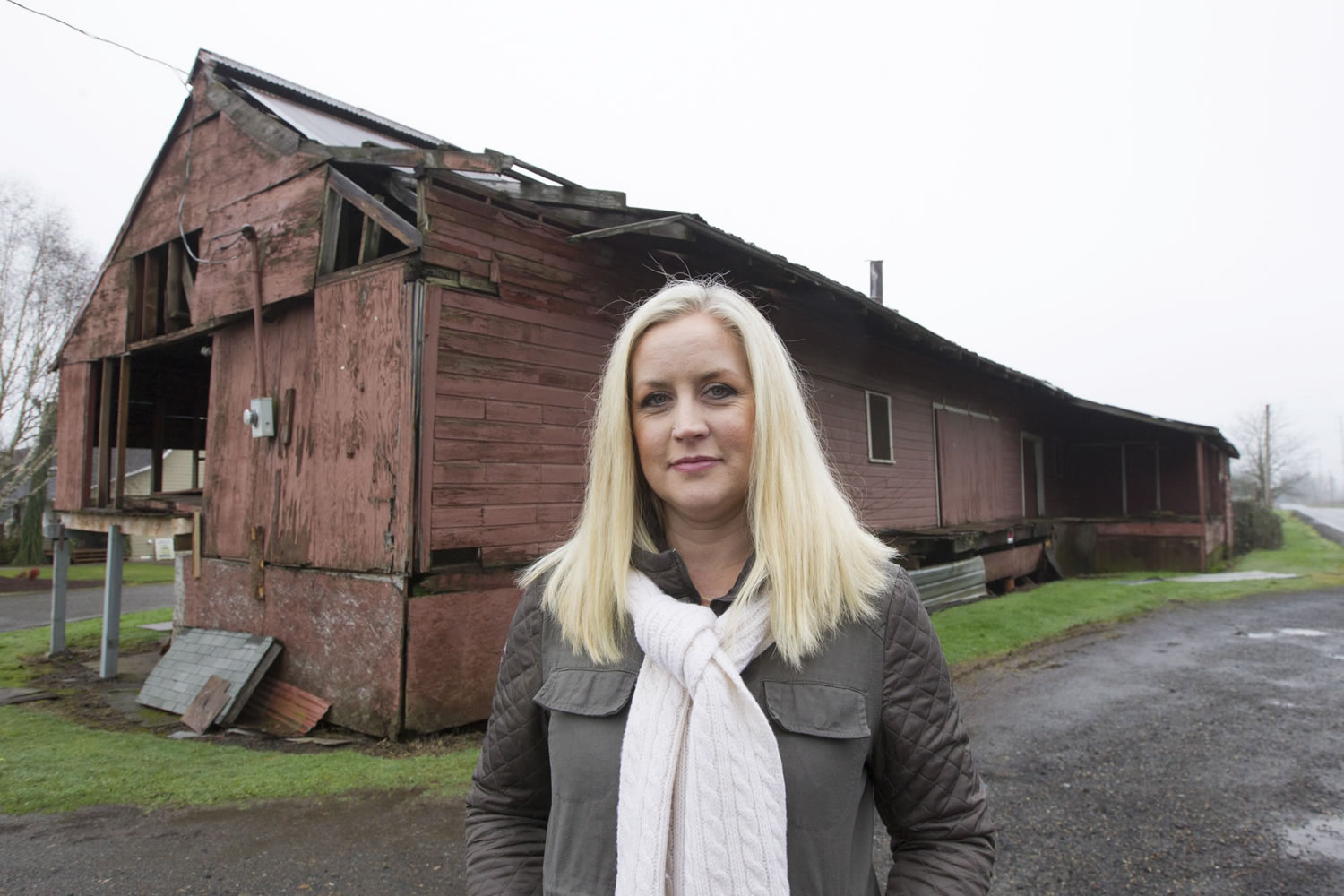Donations to restore the prune dryer can be made at: www.gofundme.com/isn794
RIDGEFIELD — As Amy Montoya strolled across her driveway, she paused and gazed at her crumbling century-old barn, somehow still standing after a recent wind storm knocked down one of its walls.
“We really want to save this barn,” Montoya said on a wet, late-December day. “People know it as a landmark to this area.”
The red barn, once colloquially known as the “Bloody Bucket,” has stood outside Montoya’s home on 41st Avenue since at least 1907, according to state records. Montoya and her family moved in about eight years ago and purchased the property in 2013.
For decades, the barn operated as a bustling prune dryer, during Clark County’s agricultural glory days, when the area was known as the prune capital of the world.
Today, Montoya’s barn is one of the few Clark County properties included in the state’s Heritage Barn Register, a collection of farm buildings that played a significant role in Washington’s agricultural, economic and cultural development. And it’s the only prune dryer on the list, Montoya said.
“This is the largest of the few that remain (in Clark County),” she said. “I still get people who come by and say, ‘Oh, I worked in there, my grandfather worked in there.’ People really identify with it.”
But the local landmark is in bad shape. Last month, Montoya launched an online fundraiser, hoping to raise $25,000 to offset a portion of the restoration costs. Eventually, she hopes to revamp the place into a new home for a business — an event space for parties, or perhaps even a café or pie shop.
“We’re figuring it’s going to take well over $100,000 to make it (conform to) commercial code,” Montoya said. “And without the community’s support and help financially, I don’t know how we’re going to get there.”
As it stands, sagging wooden floorboards stretch across the second story of the barn. Over the years, the wood has become waterlogged and dangerously unstable beneath a patchy ceiling.
Ducking under a low door frame on the ground floor, Montoya pointed to one of the two remaining kilns, now buried in mud.
“You used to be able to stand in here and not hit your head,” she said. “You can see over time what the erosion of the land has done. We’re standing two feet higher than what it used to be.”
Fruitful history
Prunes took over Southwest Washington in the late 1800s after S.W. Brown and Arthur W. Hidden planted Clark County’s first prune trees. Farmers liked the dried plums because they were easy to preserve, and at the time any fruit shipped out of the Northwest needed to be dried.
By the turn of the 20th century, Clark County was home to more than 435,000 Italian plum trees, which produced about 819 tons of fruit a year, according to the Center for Columbia River History. Three-quarters of that was shipped overseas to Germany, France and other parts of Europe.
In 1919, Vancouver honored the fruit with the city’s first prune festival, and chose a prune queen. A local marketing and public relations group called the Prunarians continued the tradition through the 1920s.
The industry fared well in the county until a perfect storm of historical shifts brought it down, starting with price drops for prunes after the stock market crash of 1929.
The decline continued through the Great Depression as prune farming moved to California, where more varieties of plums grew at a lower cost. Farmers also suffered massive losses from a wartime embargo on exports to Germany and an infestation of thrips, tiny insects notorious for destroying plums.
Montoya’s barn stayed in operation in one form or another through 1968. After its prune drying days passed, it became a feed store. Before Montoya purchased the place, a mechanic used the barn to work on cars.
“When we bought this property, the previous owner wanted to tear it down,” Montoya said, “and we’re glad that they didn’t.”
But finding the money to restore the barn on their own hasn’t been easy for the family, she said. Over the years, the Montoyas have spent thousands of dollars treating their children, who suffer from tuberous sclerosis complex, a genetic disorder that causes benign tumors to grow throughout their bodies.
With a little help from the community, Montoya envisions the barn’s becoming an attractive destination to hang out or host a party. It’s already a popular place to stop and take in the scenery, she said.
The fallen wall faces an 80-acre field with views stretching far into the distance. Before the storm, Montoya joked about someday replacing the wall with a large window. Now, she thinks she may do just that.
“Behind those trees is the Columbia River and Vancouver Lake,” she said, pointing out beyond the field. “Occasionally, you can see a ship going by. There’s always sunsets. People pull in here all the time taking pictures.”




